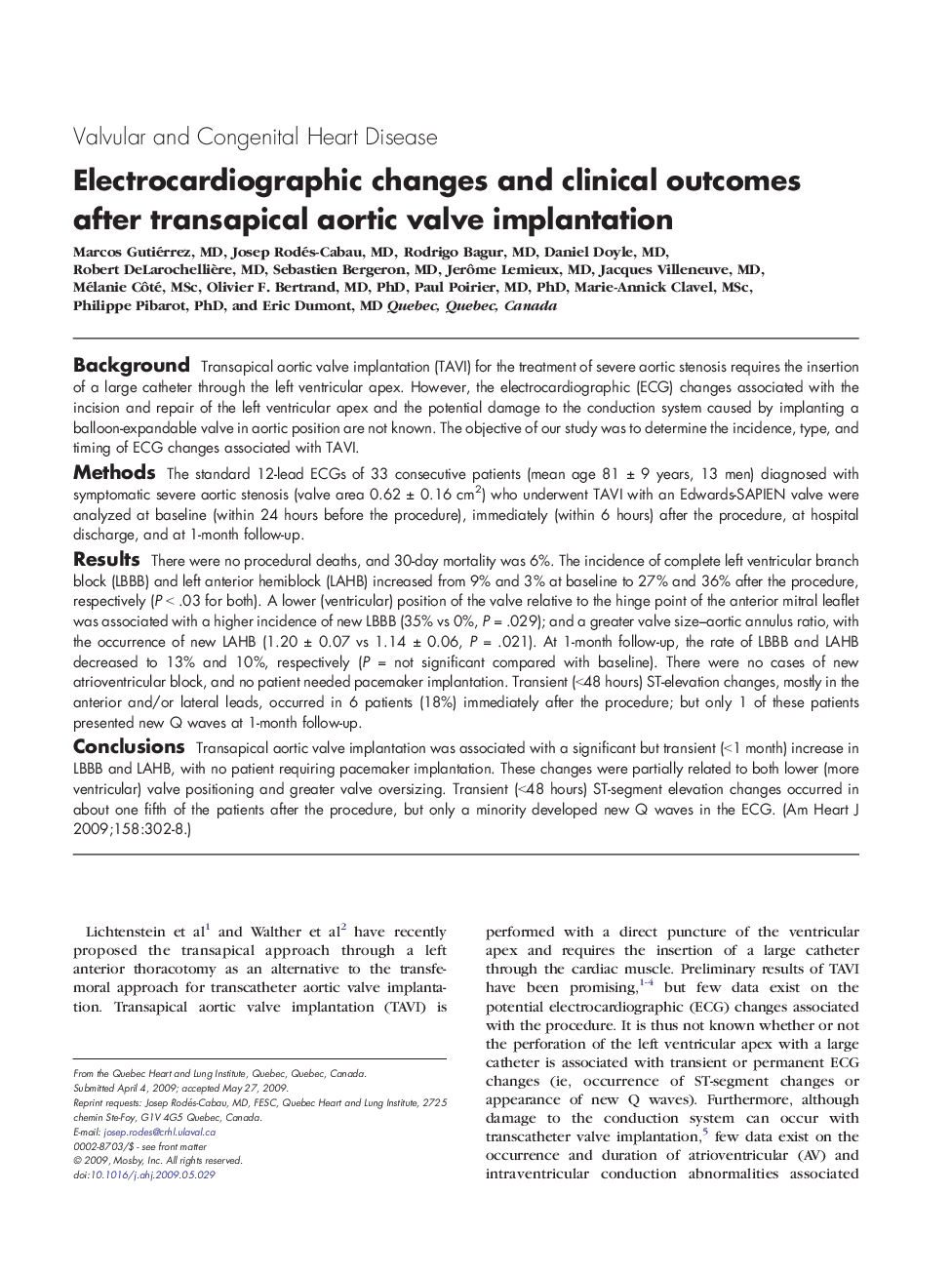| کد مقاله | کد نشریه | سال انتشار | مقاله انگلیسی | نسخه تمام متن |
|---|---|---|---|---|
| 2849703 | 1167719 | 2009 | 7 صفحه PDF | دانلود رایگان |

BackgroundTransapical aortic valve implantation (TAVI) for the treatment of severe aortic stenosis requires the insertion of a large catheter through the left ventricular apex. However, the electrocardiographic (ECG) changes associated with the incision and repair of the left ventricular apex and the potential damage to the conduction system caused by implanting a balloon-expandable valve in aortic position are not known. The objective of our study was to determine the incidence, type, and timing of ECG changes associated with TAVI.MethodsThe standard 12-lead ECGs of 33 consecutive patients (mean age 81 ± 9 years, 13 men) diagnosed with symptomatic severe aortic stenosis (valve area 0.62 ± 0.16 cm2) who underwent TAVI with an Edwards-SAPIEN valve were analyzed at baseline (within 24 hours before the procedure), immediately (within 6 hours) after the procedure, at hospital discharge, and at 1-month follow-up.ResultsThere were no procedural deaths, and 30-day mortality was 6%. The incidence of complete left ventricular branch block (LBBB) and left anterior hemiblock (LAHB) increased from 9% and 3% at baseline to 27% and 36% after the procedure, respectively (P < .03 for both). A lower (ventricular) position of the valve relative to the hinge point of the anterior mitral leaflet was associated with a higher incidence of new LBBB (35% vs 0%, P = .029); and a greater valve size–aortic annulus ratio, with the occurrence of new LAHB (1.20 ± 0.07 vs 1.14 ± 0.06, P = .021). At 1-month follow-up, the rate of LBBB and LAHB decreased to 13% and 10%, respectively (P = not significant compared with baseline). There were no cases of new atrioventricular block, and no patient needed pacemaker implantation. Transient (<48 hours) ST-elevation changes, mostly in the anterior and/or lateral leads, occurred in 6 patients (18%) immediately after the procedure; but only 1 of these patients presented new Q waves at 1-month follow-up.ConclusionsTransapical aortic valve implantation was associated with a significant but transient (<1 month) increase in LBBB and LAHB, with no patient requiring pacemaker implantation. These changes were partially related to both lower (more ventricular) valve positioning and greater valve oversizing. Transient (<48 hours) ST-segment elevation changes occurred in about one fifth of the patients after the procedure, but only a minority developed new Q waves in the ECG.
Journal: American Heart Journal - Volume 158, Issue 2, August 2009, Pages 302–308